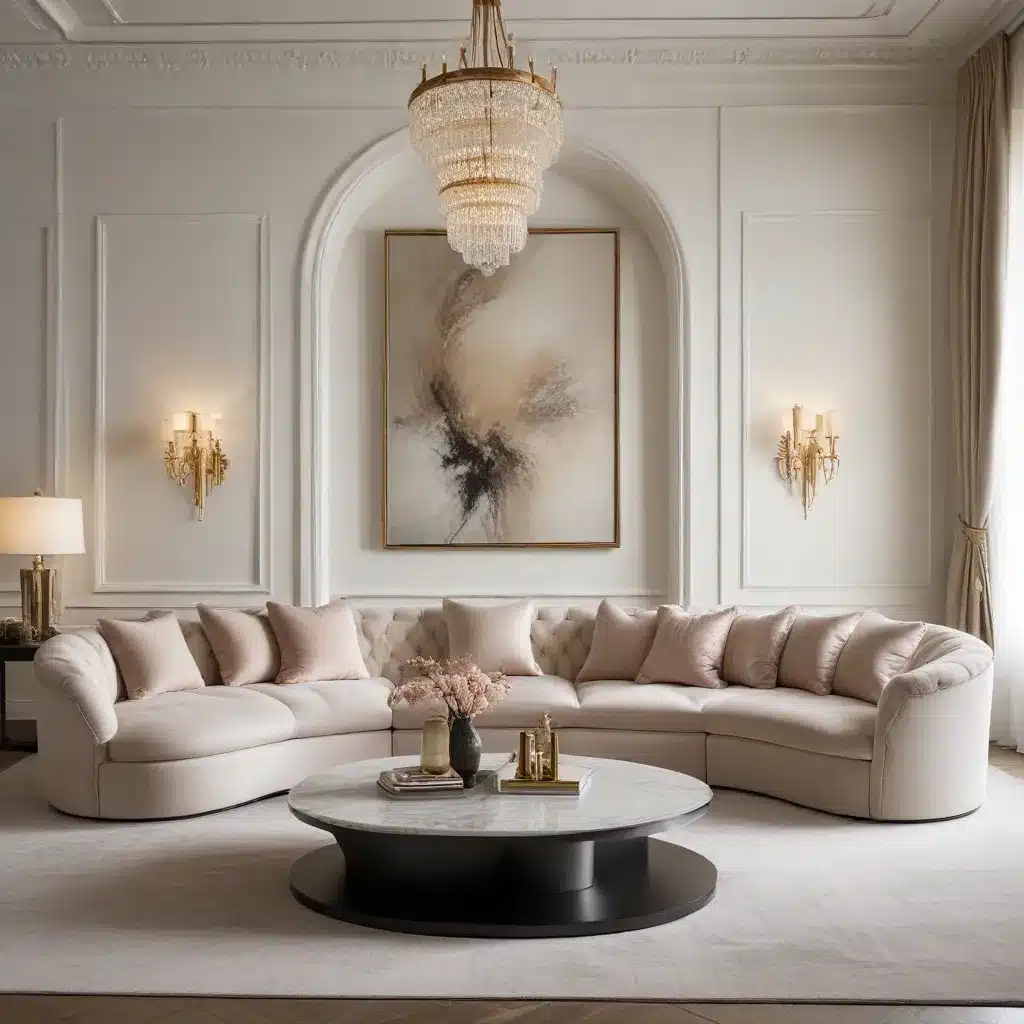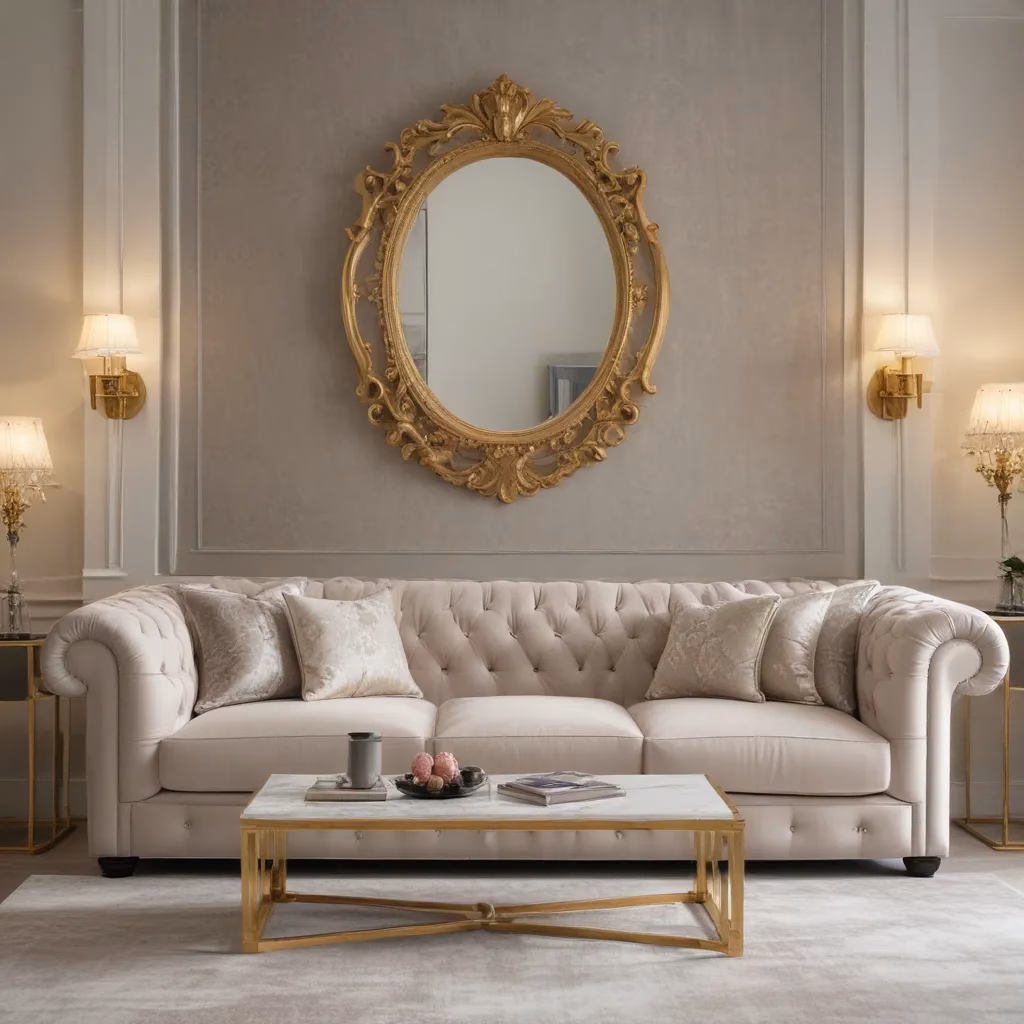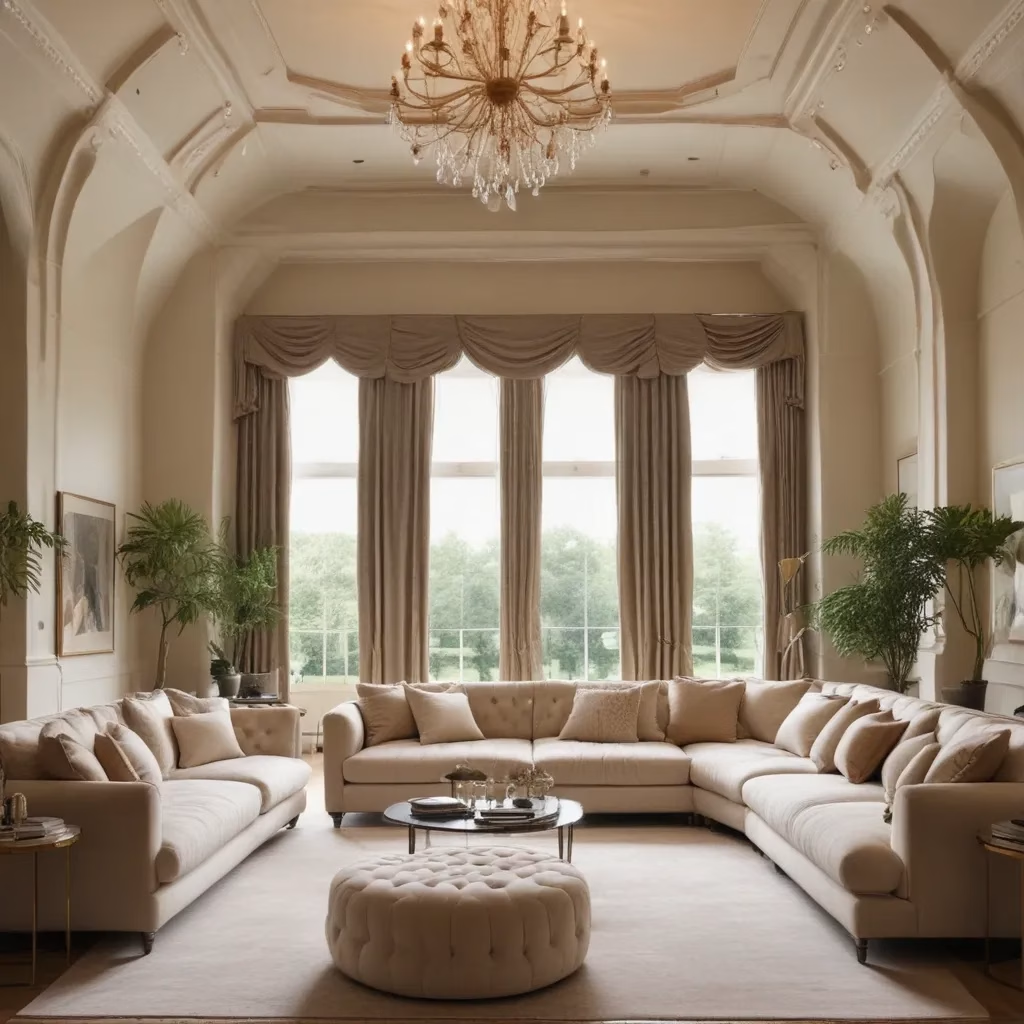
The Evolution of Sofa Design in Modern Interiors
As a furniture specialist with years of experience in the industry, I’ve witnessed firsthand the remarkable transformation of sofa design over the past decade. The humble sofa, once a mere functional piece, has evolved into a statement of style and comfort that can define an entire living space.
In recent years, we’ve seen a shift towards more versatile and modular designs. Homeowners are increasingly seeking furniture that can adapt to their changing needs and spaces. This trend has given rise to sectional sofas that can be rearranged to suit different room layouts or occasions. I remember working with a client who was hesitant about investing in a modular sofa, fearing it might look disjointed. However, after we selected a sleek, contemporary design, she was amazed at how it transformed her living room, providing both flexibility and cohesion.
Another significant trend I’ve observed is the growing appreciation for sustainable materials in sofa construction. Eco-conscious consumers are driving demand for sofas made from recycled fabrics, responsibly sourced wood, and non-toxic foams. This shift isn’t just about being environmentally friendly; it’s also about creating healthier living spaces. I’ve had numerous conversations with customers who’ve reported feeling better after switching to sofas made with natural, hypoallergenic materials.
Upholstery Choices: Balancing Aesthetics and Durability
When it comes to upholstery, the options available today are more diverse than ever. From luxurious velvets to durable performance fabrics, the choice of material can dramatically impact both the look and longevity of a sofa. In my experience, selecting the right upholstery is often the most crucial decision in the sofa-buying process.
Performance fabrics have gained immense popularity, especially among families with children or pets. These materials are engineered to resist stains, spills, and wear, making them a practical choice for high-traffic areas. I once worked with a young couple who were torn between a beautiful silk-blend fabric and a more durable option. After discussing their lifestyle and long-term goals, we opted for a high-quality performance fabric that mimicked the look of silk but offered superior durability. Years later, they thanked me for the recommendation, as their sofa still looked pristine despite daily use by their growing family.
For those seeking a more luxurious feel, velvets and textured weaves have made a strong comeback. These materials add depth and richness to a room, creating a focal point that draws the eye. However, it’s important to consider the maintenance requirements of such fabrics. I always advise clients to think about their willingness to care for more delicate materials before making a decision.
The Art of Sofa Placement in Interior Design
The way a sofa is positioned within a room can have a profound impact on the overall flow and functionality of the space. As an interior design enthusiast, I’ve learned that there’s much more to sofa placement than simply pushing it against a wall.
One technique I often employ is the “floating” sofa arrangement. By placing a sofa away from the walls, you can create a more intimate seating area and improve traffic flow in larger rooms. This approach works particularly well in open-plan living spaces, where it can help define separate zones without the need for physical barriers.
Another consideration is the focal point of the room. Whether it’s a fireplace, a stunning view, or a piece of art, the sofa should be positioned to complement and enhance this feature. I recall working on a project where the client had a beautiful bay window overlooking a garden. By angling the sofa slightly towards the window, we created a seating arrangement that not only maximized the view but also made the room feel more spacious and connected to the outdoors.
It’s also crucial to consider the balance of the room when placing a sofa. In larger spaces, pairing a sofa with complementary armchairs or a chaise lounge can create a well-rounded seating arrangement. The key is to maintain proportionality and ensure that the furniture doesn’t overwhelm the space or leave it feeling sparse.
Innovative Features in Modern Sofa Design
The integration of technology into sofa design has been one of the most exciting developments I’ve witnessed in recent years. From built-in USB ports for charging devices to hidden storage compartments for electronics, today’s sofas are adapting to our increasingly connected lifestyles.
One particularly innovative feature I’ve seen gaining traction is the incorporation of adjustable headrests and lumbar support. These ergonomic elements allow users to customize their seating position for optimal comfort, whether they’re reading, watching TV, or simply relaxing. I’ve had clients with chronic back pain report significant improvement in their comfort levels after switching to sofas with these features.
Another trend that’s revolutionizing sofa design is the concept of modularity taken to the extreme. Some manufacturers now offer sofas that can be completely reconfigured, with removable arms, backs, and even seat cushions that can be rearranged to create different seating configurations. This level of flexibility is perfect for those who love to refresh their living space regularly or need to adapt their furniture to different rooms over time.
Maintaining Your Sofa: Tips from a Professional
As someone who’s seen countless sofas over the years, I can’t stress enough the importance of proper maintenance. A well-cared-for sofa can last for decades, retaining its comfort and appearance long after its purchase.
One of the most critical aspects of sofa care is regular cleaning. I always recommend vacuuming your sofa at least once a week to remove dust and debris that can work its way into the fabric and cause premature wear. For leather sofas, a gentle wipe-down with a slightly damp cloth can help keep the surface clean and supple.
Addressing spills immediately is crucial to preventing stains. I’ve seen too many beautiful sofas ruined by delayed reactions to accidents. Always blot, never rub, and use cleaning products specifically designed for your sofa’s upholstery type. If you’re unsure, it’s best to consult a professional cleaner rather than risk damaging the fabric.
Rotating cushions and pillows regularly can help distribute wear evenly and maintain the sofa’s shape. This is especially important for sofas with loose cushions. I suggest flipping and rotating cushions monthly to ensure even compression of the filling materials.
The Psychology of Color in Sofa Selection
The color of a sofa can have a significant impact on the mood and atmosphere of a room. As someone who’s helped countless clients choose the perfect sofa, I’ve learned that color selection is often as much about psychology as it is about aesthetics.
Neutral tones like beige, gray, and taupe remain popular choices for their versatility and timeless appeal. These colors provide a blank canvas that allows for easy accessorizing and can adapt to changing design trends. However, I’ve noticed a growing trend towards bolder color choices in recent years.
Deep blues and greens have emerged as popular alternatives to traditional neutrals. These hues can add depth and sophistication to a space while still providing a relatively neutral base. I once worked with a client who was hesitant about choosing a deep teal sofa, worried it might overwhelm her living room. After seeing how it complemented her existing decor and added a sense of calm to the space, she was thrilled with the decision.
For those looking to make a statement, vibrant colors like yellow, orange, or even pink can inject energy and personality into a room. These bold choices work particularly well in spaces with otherwise neutral decor, serving as a focal point that anchors the entire design scheme.
Sustainable Practices in Sofa Manufacturing
Sustainability has become a key consideration in furniture design and manufacturing, and sofas are no exception. As consumers become more environmentally conscious, the demand for sustainably produced furniture has skyrocketed.
One of the most significant developments I’ve seen in this area is the use of recycled and upcycled materials in sofa construction. Some manufacturers are now using fabrics made from recycled plastic bottles or reclaimed wood for frames. These practices not only reduce waste but often result in unique, characterful pieces that tell a story.
Another aspect of sustainable sofa production is the move towards more durable, long-lasting designs. By creating sofas that are built to last, manufacturers can reduce the frequency with which furniture ends up in landfills. This approach often involves using higher quality materials and construction techniques, which can result in a higher initial cost but better value over time.
The concept of circular design is also gaining traction in the sofa industry. This approach considers the entire lifecycle of a product, from production to eventual disposal or recycling. Some innovative companies are now offering take-back programs, where they’ll recycle or refurbish old sofas when customers purchase new ones.
The Role of Sofas in Open-Plan Living
The trend towards open-plan living has had a significant impact on sofa design and placement. In these larger, multi-functional spaces, sofas often play a crucial role in defining different areas and creating a sense of cohesion.
One technique I frequently use in open-plan designs is to use a sofa as a room divider. By placing a sofa with its back to the dining or kitchen area, you can create a distinct living space without the need for walls. This approach works particularly well with sofas that have attractive back designs or those paired with a console table.
In open-plan spaces, scale becomes even more important. A sofa that looks perfectly proportioned in a traditional living room might appear lost in a larger open area. I often recommend opting for larger sectionals or pairing standard sofas with additional seating to create a balanced look.
The versatility of modular sofas really shines in open-plan living. These pieces can be reconfigured to suit different occasions, from intimate gatherings to larger parties. I’ve worked with clients who use their modular sofas to create cozy reading nooks during the day and expand them for movie nights with the family.
Blending Classic and Contemporary Sofa Styles
One of the most exciting aspects of current sofa design is the blending of classic and contemporary styles. This fusion allows for the creation of pieces that are both timeless and fresh, appealing to a wide range of tastes and interior styles.
I’ve seen a resurgence of traditional sofa silhouettes, such as Chesterfields and tuxedo sofas, reimagined with modern fabrics and details. For example, a classic Chesterfield sofa upholstered in a bold, contemporary print can become a stunning centerpiece in a modern living room.
Conversely, sleek, minimalist sofa designs are being softened with the addition of traditional elements like button tufting or turned legs. This combination of old and new creates pieces that feel both familiar and exciting.
One of my favorite projects involved helping a client integrate a family heirloom sofa into their otherwise contemporary home. By reupholstering the piece in a modern fabric and pairing it with contemporary side tables and lighting, we created a look that honored the sofa’s history while fitting seamlessly into the current design scheme.
The Future of Sofa Design: Trends to Watch
As we look to the future of sofa design, several exciting trends are emerging that promise to shape the industry in the coming years.
Smart technology integration is set to become more sophisticated and seamless. We’re likely to see sofas with built-in speakers, heating elements, and even mood lighting controlled via smartphone apps. While these features are already available in some high-end models, I expect them to become more widespread and refined.
Personalization is another area where I anticipate significant growth. With advancements in manufacturing technology, it’s becoming increasingly feasible for consumers to customize every aspect of their sofa, from the exact dimensions to the placement of seams and buttons. This level of customization allows for truly unique pieces that perfectly fit both the physical space and personal style of the owner.
Sustainability will continue to be a driving force in sofa design. I expect to see more experimentation with eco-friendly materials, such as plant-based foams and fabrics made from agricultural waste products. The focus on circular design is also likely to grow, with more manufacturers considering the entire lifecycle of their products.
Finally, I believe we’ll see a continued blurring of the lines between indoor and outdoor furniture. As outdoor living spaces become more important, there’s a growing demand for sofas that can transition seamlessly between indoor and outdoor use. This trend is driving innovations in weather-resistant materials and construction techniques that don’t compromise on style or comfort.
Choosing the Right Sofa for Your Space
Selecting the perfect sofa for your home can be a daunting task, but with the right approach, it can also be an enjoyable and rewarding experience. As someone who’s guided countless clients through this process, I’ve developed a set of key considerations that can help ensure you make the right choice.
First and foremost, consider the scale of your space. A sofa that overwhelms a room can make it feel cramped and uncomfortable, while one that’s too small can look out of place and fail to provide adequate seating. I always recommend measuring your space carefully and using painter’s tape to mark out the dimensions of potential sofas on the floor. This simple technique can give you a much clearer idea of how a piece will fit than you might get from just looking at measurements on paper.
Comfort is, of course, paramount. I encourage clients to spend time actually sitting on sofas before making a purchase. Pay attention to the depth of the seat, the height of the back, and the firmness of the cushions. Remember that what feels comfortable for a few minutes in a showroom might not be ideal for long periods of lounging at home.
Consider your lifestyle when choosing both the style and upholstery of your sofa. If you have children or pets, durability should be a top priority. Performance fabrics can be a great choice in these situations, offering resistance to stains and wear without sacrificing style.
Don’t forget about maintenance requirements. Some fabrics and designs require more upkeep than others. Be honest with yourself about how much time and effort you’re willing to put into maintaining your sofa, and choose accordingly.
Finally, think about the long-term. A high-quality sofa is an investment that should last for many years. Consider how your needs and tastes might change over time, and opt for designs and colors that have the flexibility to adapt to different styles and life stages.
Conclusion
As we’ve explored throughout this article, the world of sofa design is rich with innovation, sustainability, and style. From the integration of smart technology to the rise of modular and customizable options, today’s sofas offer more than just a place to sit – they’re a reflection of our lifestyles, values, and design sensibilities.
Whether you’re in the market for a new sofa or simply interested in staying abreast of furniture trends, I hope this discussion has provided valuable insights and inspiration. Remember, the perfect sofa is out there for everyone – it’s just a matter of finding the right balance of style, comfort, and functionality for your unique needs.
For more expert advice and a wide selection of quality sofas, I encourage you to visit Sofa Spectacular. Their range of products and knowledgeable staff can help you navigate the exciting world of sofa design and find the perfect piece for your home.



